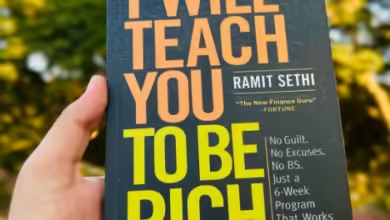Best Books on Beating Credit Card Debt and Building Good Credit
Check out these 5 books to help you build a good credit score.
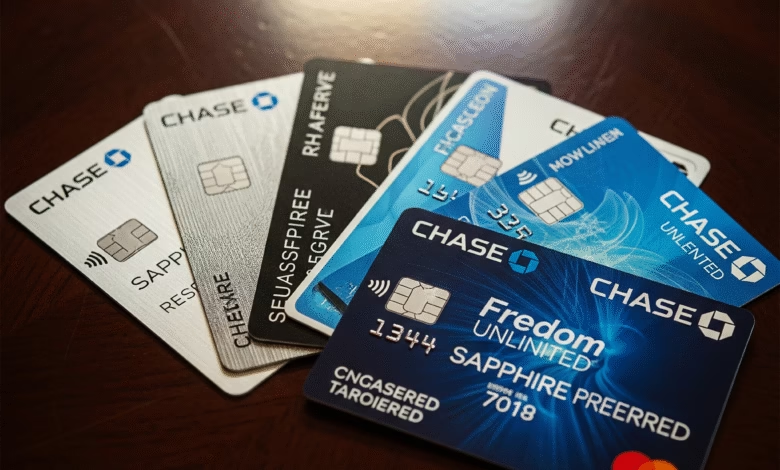
Credit card debt can feel like a relentless weight, a financial fog that follows you everywhere and clouds your vision of a brighter future. For millions of Americans, the cycle of high interest rates, minimum payments, and growing balances creates a seemingly inescapable trap. At the same time, the mysterious world of credit scores can feel like an exclusive club with rules you were never taught, locking you out of the best rates for mortgages, car loans, and more.
But what if you had a roadmap? What if you could access the proven strategies of financial experts who have guided countless individuals from the depths of debt to a place of financial strength and confidence? The good news is, that roadmap exists. It’s found within the pages of several transformative books that have become the go-to guides for anyone ready to make a profound and lasting change in their financial life.
This article is your curated library of the most powerful books ever written on conquering credit card debt and mastering the art of a high credit score. We will explore the core philosophies of these essential reads, breaking down their actionable steps and unique approaches. Whether you need a motivational kickstart, a strategic behavioral plan, or a technical guide to the credit system, the knowledge in these books will empower you to not just get by, but to get ahead.
1. The Total Money Makeover by Dave Ramsey
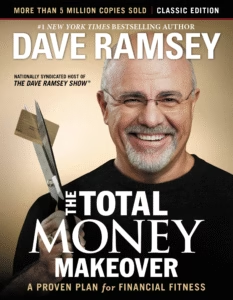
Your No-Nonsense Guide to Winning with Money
When it comes to getting out of debt, no name is more recognized in American households than Dave Ramsey. “The Total Money Makeover” isn’t a book of suggestions; it’s a battle-tested, step-by-step plan that has helped millions of families break the chains of debt. Ramsey’s philosophy is rooted in one simple truth: personal finance is 80% behavior and only 20% head knowledge. His approach is designed to change your habits, your mindset, and ultimately, your family’s financial future.
This book is perfect for those who feel overwhelmed and need a clear, prescriptive plan to follow. It’s less about financial theory and more about taking immediate, decisive action.
Core Concepts and The Debt Snowball Strategy
Ramsey’s plan is built around his famous “7 Baby Steps,” but his most revolutionary tool for debt elimination is the “Debt Snowball.”
- Understanding the Debt Snowball: The methodology is brilliantly simple and psychologically powerful. You list all your debts (excluding your mortgage) from the smallest balance to the largest, regardless of the interest rate. You then make the minimum payment on all debts except for the smallest one. On that smallest debt, you throw every extra dollar you can find—from cutting your budget to working extra hours.
- Building Momentum: Once that smallest debt is paid off, you experience a quick, motivating win. You then take the entire amount you were paying on that debt (the minimum payment plus the extra) and roll it onto the next-smallest debt. As you pay off each debt, the “snowball” of money you’re applying to the next one gets bigger and bigger, creating an unstoppable momentum that makes you feel empowered and in control.
- Why It Works: While mathematicians will argue that paying the highest-interest debt first (the “debt avalanche” method) saves more money, Ramsey correctly identifies that the biggest obstacle for most people isn’t math—it’s staying motivated. The quick wins from the debt snowball provide the psychological boost needed to stick with the plan for the long haul.
- Beyond the Snowball: The book also provides a complete financial plan, including creating a starter emergency fund, saving for retirement, and paying off your house early. It’s a holistic approach to building a secure financial life, with debt elimination as the critical first step.
“The Total Money Makeover” is more than a book; it’s a movement. It’s for anyone who is sick and tired of being in debt and is ready for a dose of tough love and a plan that has been proven to work time and time again.
2. Your Money or Your Life by Vicki Robin & Joe Dominguez
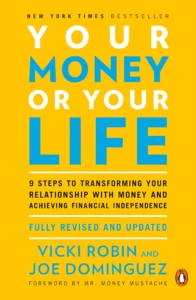
Redefining Wealth and Achieving Financial Independence
First published in 1992 and updated for a new generation, “Your Money or Your Life” is a profound book that goes far beyond the mechanics of debt repayment. It fundamentally challenges your relationship with money and work. Vicki Robin and Joe Dominguez argue that the relentless pursuit of more is a trap that keeps us in jobs we dislike to buy things we don’t need.
This book is ideal for the introspective individual who wants to understand the “why” behind their financial habits. It’s for those who feel that their spending is out of alignment with their values and are searching for a more meaningful way to live.
Core Concepts and The “Life Energy” Philosophy
The central idea is to reframe money not as dollars and cents, but as the “life energy” you trade for it. Every dollar you spend represents a piece of your life that you can never get back.
- Calculating Your Real Hourly Wage: The book walks you through a powerful exercise to determine what you really earn per hour. You start with your salary and then subtract all work-related expenses: commuting costs, work clothes, the extra meals you buy because you’re too tired to cook, and even the cost of de-stressing from your job. The result is often a shockingly low number that makes you question if that expensive purchase is truly worth the hours of your life required to earn it.
- The Nine-Step Program: The book outlines a clear, nine-step program to achieve “Financial Independence” (FI)—the point where your investment income covers your living expenses, and work becomes optional. A key part of this journey is getting out of debt, not just to save on interest, but to reclaim the life energy that debt payments consume each month.
- Conscious Spending and Frugality: By tracking every cent that comes in and out of your life, you become acutely aware of where your life energy is going. This isn’t about painful penny-pinching; it’s about conscious spending. You naturally begin to cut spending on things that don’t bring you fulfillment and align your finances with your true values. This mindful approach often leads to a surplus of money that can be used to aggressively pay down debt.
“Your Money or Your Life” provides the philosophical foundation for conquering debt. It turns the painful task of debt repayment into a liberating journey of self-discovery and empowerment, making it the foundational text for the modern FIRE (Financial Independence, Retire Early) movement.
3. I Will Teach You to Be Rich by Ramit Sethi
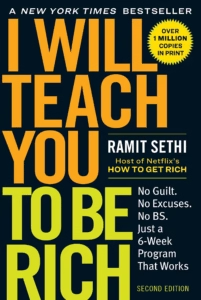
A Modern, Automated Approach to Financial Freedom
Ramit Sethi speaks to a new generation that values convenience, automation, and a life of abundance. “I Will Teach You to Be Rich” is a refreshing departure from the deprivation-focused mindset of many personal finance gurus. Sethi’s philosophy isn’t about cutting out lattes; it’s about automating your finances, negotiating for “big wins,” and consciously spending on the things you love while mercilessly cutting costs on the things you don’t.
This book is perfect for the tech-savvy individual who wants a practical, set-it-and-forget-it system for managing their money, paying off debt, and building wealth without the hassle of daily budgeting.
Core Concepts and Using Credit Cards Wisely
Sethi takes a contrarian view on credit cards, arguing that they are powerful tools for building credit and earning rewards if used responsibly. His program is designed to get you out of debt and then transform you into a master of the credit system.
- The Automated Debt Payoff Plan: Sethi provides a clear, actionable plan for tackling credit card debt. It involves:
- Totaling Your Debt: Getting a clear, honest picture of exactly how much you owe.
- Negotiating a Lower APR: Providing word-for-word scripts to call your credit card companies and negotiate a lower interest rate, which can save you thousands.
- Choosing a Strategy: Deciding whether to pay off the highest-interest card first or the one with the lowest balance.
- Automating Payments: Setting up automatic transfers to ensure you never miss a payment and are consistently paying down your principal.
- The Conscious Spending Plan: Instead of a restrictive budget, Sethi advocates for a plan that divides your income into four categories: Fixed Costs, Investments, Savings Goals, and Guilt-Free Spending Money. By automating this system, you know exactly how much you can spend without derailing your financial goals.
- Building Excellent Credit: Once out of debt, Sethi teaches you how to optimize your credit. This includes requesting credit limit increases to lower your credit utilization ratio, keeping old accounts open to lengthen your credit history, and using the right rewards cards to your advantage.
“I Will Teach You to Be Rich” is the ultimate guide for the modern professional who wants a sophisticated yet simple system to eliminate debt, build excellent credit, and live a “rich life” on their own terms.
4. Credit Repair Kit for Dummies by Steve Bucci
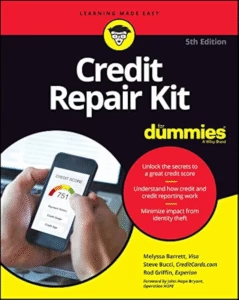
Your A-to-Z Guide for Understanding and Fixing Your Credit
Once you’ve started your debt repayment journey, understanding the credit system becomes paramount. “Credit Repair Kit for Dummies” is an accessible, comprehensive guide that demystifies the world of credit reports, scores, and bureaus. Written in the classic, easy-to-understand “Dummies” format, this book provides the practical tools and knowledge needed to clean up your credit and build a strong financial foundation.
This book is essential for anyone who feels lost when looking at a credit report or wants to take a hands-on approach to disputing errors and rebuilding their score.
Core Concepts and Actionable Credit Repair Steps
The book breaks down the credit repair process into manageable steps, empowering you to become your own best advocate.
- Decoding Your Credit Report: It teaches you how to obtain your free annual credit reports from all three major bureaus (Equifax, Experian, and TransUnion) and how to read them. You’ll learn to identify common errors, from incorrect personal information to accounts that don’t belong to you.
- The Dispute Process, Step-by-Step: The book provides sample letters and a clear guide on how to dispute inaccuracies with both the credit bureaus and the original creditors. This is a critical skill for removing negative items that are unfairly dragging down your score.
- Understanding the Five Factors of Your Credit Score: It provides a clear breakdown of the components that make up your FICO score:
- Payment History (35%): The most important factor.
- Amounts Owed (30%): Your credit utilization ratio.
- Length of Credit History (15%): The age of your accounts.
- New Credit (10%): Recent inquiries and new accounts.
- Credit Mix (10%): The variety of credit types you use.
- Strategies for Rebuilding: Beyond just cleaning up errors, the book offers proven strategies for building positive credit history, such as using a secured credit card responsibly, becoming an authorized user on a family member’s account, and understanding the impact of taking on new loans.
“Credit Repair Kit for Dummies” is a must-have reference guide. It removes the fear and confusion surrounding credit and provides the actionable advice you need to build an excellent score.
5. The 9 Steps to Financial Freedom by Suze Orman
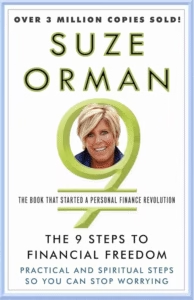
An Emotional and Spiritual Approach to Financial Well-Being
Suze Orman brought a new dimension to personal finance by focusing on the emotional and psychological barriers that prevent us from achieving wealth. “The 9 Steps to Financial Freedom” argues that our financial problems are often symptoms of our fears, anxieties, and past experiences with money. Her approach is a unique blend of practical financial advice and motivational coaching.
This book is for those who suspect their money problems run deeper than just overspending. It’s for anyone who wants to heal their relationship with money and build a life of authentic wealth.
Core Concepts for Overcoming Debt and Building Self-Worth
Orman’s steps are designed to build your self-worth and your net worth simultaneously.
- Facing Your Financial Fears: The initial steps focus on exploring your “money memories” and confronting the fears and anxieties that drive your financial behavior. By understanding the root causes of your debt, you can begin to make conscious choices that are not driven by emotion.
- Respecting Your Money: Orman teaches that you must respect yourself and your money. This translates into practical actions like opening your bills on time, knowing your account balances, and creating a budget that reflects your priorities.
- Trusting Yourself More Than You Trust Others: This is a call for financial self-reliance. Orman provides the tools to understand investments, insurance, and retirement plans so that you can make informed decisions rather than blindly following the advice of others. For credit, this means understanding the terms of your agreements and taking responsibility for your financial obligations.
By combining psychological insights with sound financial strategies, “The 9 Steps to Financial Freedom” offers a holistic path to not just paying off your debts, but also creating a life of genuine financial peace and security.
Your New Financial Chapter Starts Today
The journey from the stress of credit card debt to the confidence of a strong credit score is not a quick fix—it’s a transformation. The authors and books listed here offer different philosophies and strategies, but they all share a common belief: that you have the power to change your financial destiny.
Choose the book that resonates most with your personality and your situation. Whether you need the tough love of Dave Ramsey, the mindful approach of Vicki Robin, the automated system of Ramit Sethi, the technical guidance of Steve Bucci, or the emotional wisdom of Suze Orman, your guide is waiting. The path to financial freedom has been clearly mapped out. All you have to do is take the first step and turn the page.




